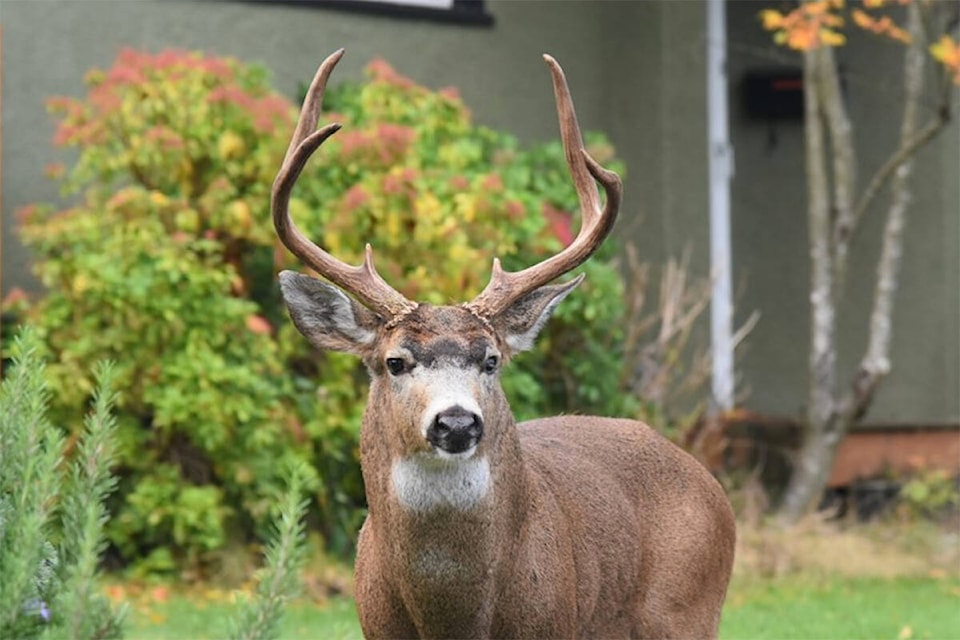While spring might be the season of love for humans, it’s fall that turns a young buck’s thoughts to all things “romance.”
And older bucks, too, for that matter!
It’s all in the hormones, after all, and for Victoria’s urban deer population, autumn means rutting season – a time when bucks will be single-minded in their pursuit of does, and not as alert to potential dangers … like cars. And because of that, it’s essential to expect the unexpected and give them their space.
“For bucks, any ‘street sense’ they’ve developed goes out the window when their hormones kick in,” explains Kristy Kilpatrick, from the Urban Wildlife Stewardship Society. “Unfortunately, that unpredictable behaviour also coincides with darker, rainy weather, which can be a problem if they follow the scent of a doe into the road.”
Buck behaviour 101:
1. Whether driving, cycling or skateboarding, pay extra attention – especially in areas deer are known to frequent, and at dawn and dusk, when wildlife tends to be more active. Slow down, give the animal time and space to safely get out of the way. Remember, lights can further confuse deer, causing them to stop or behave erratically.
2. Bucks are really only interested in the doe down the road, but it’s always best to maintain your distance, as with any wildlife. Bucks can rub their antlers on trees or sometimes fight each other, but they’re just showing off their strength and superiority as they look for love.
3. A deer’s natural response to danger is to run, so always leave it an escape route. And no matter their size, dogs are perceived as a threat, so keep them on a leash. If you encounter a deer, pull your dog close to you, stop it barking if possible, and walk away, distancing yourself from the deer. At home, carefully check your yard for deer before letting your dog out.
Visit the UWSS website for more ideas and information.
Immuno-contraceptive update
In Esquimalt, public reaction has been almost uniformly positive to the immuno-contraceptive program, the team reports. Twenty control deer have been marked and IC treatment is now underway for approximately 75 per cent of Esquimalt’s estimated population of female deer. Black collars with yellow tags identify control deer and those with black collars only have received the vaccine.
The Township of Esquimalt is also hosting the capture permission survey, which residents fill out to grant the team permission to conduct deer captures on their properties.
Additionally, 33 of 40 cameras are in place, with the full array to be deployed by next week to help track deer as they move about the community.
For more tips about living with urban deer, visit uwss.ca. Follow along with Esquimalt’s study at esquimalt.ca/urbandeer
READ MORE: Management program underway for Esquimalt’s urban deer
